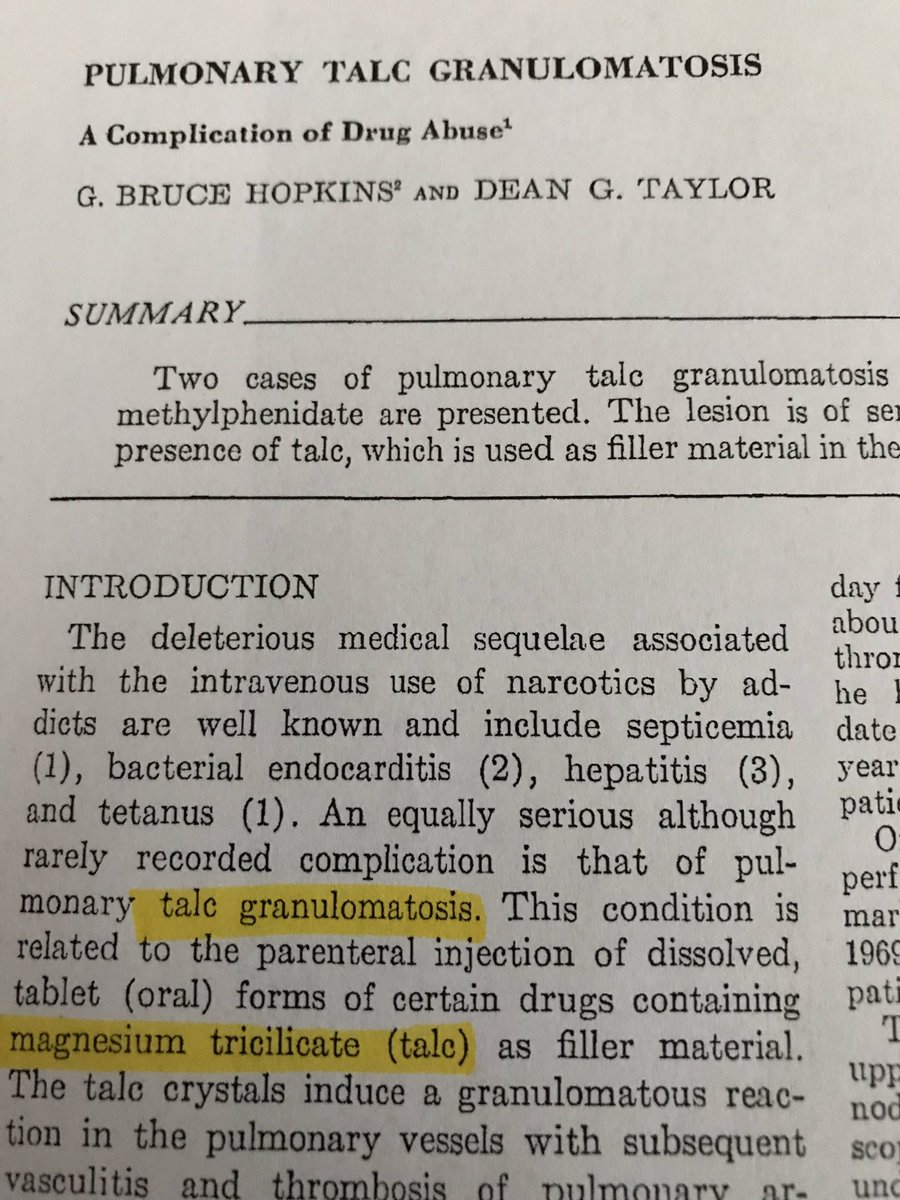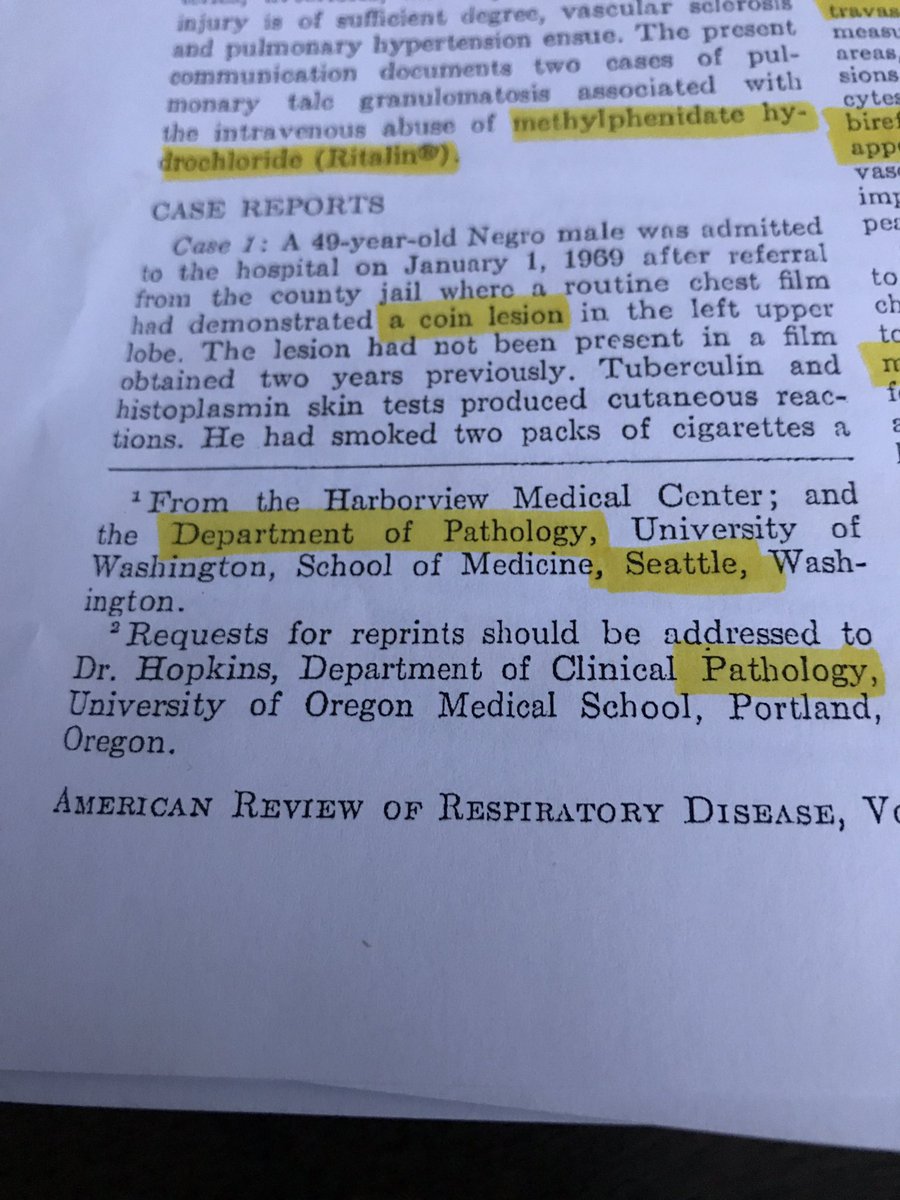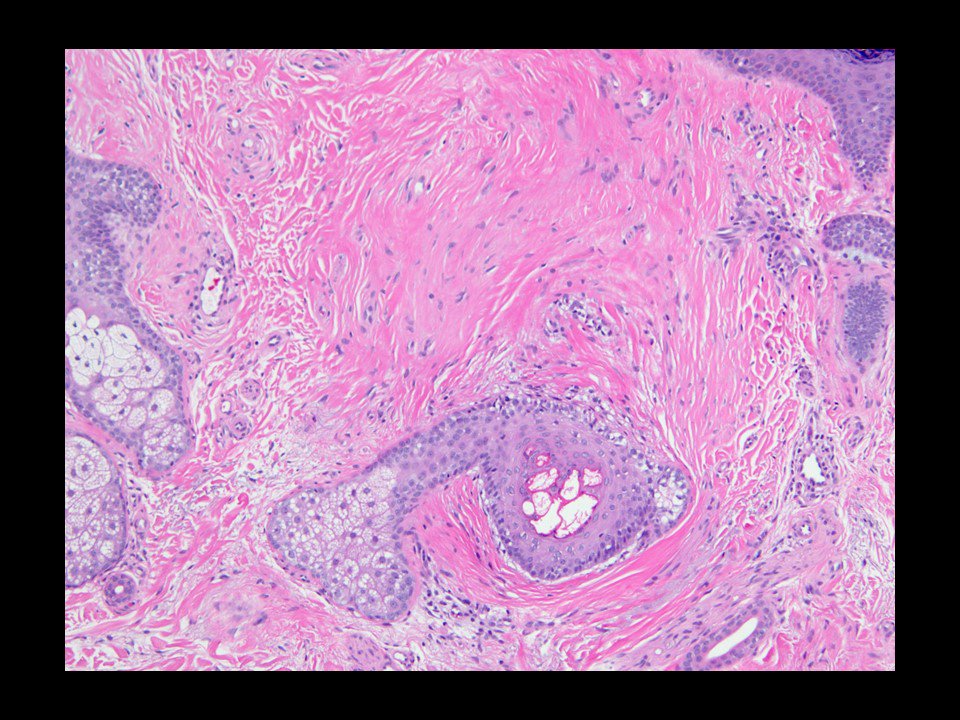1/
This #pathtweetorial will address the entity know as “talc granulomatosis” and review the literature, including old papers!
#pathology #pulmpath #granuloma
I did a quick search to find the first time “talc granulomatosis” was used as a term for lung lesions caused by excipients in pills, and came across this 1970 paper. Were Hopkins and Taylor the first to coin the term? Correct me if I’m wrong @yro854
ncbi.nlm.nih.gov/pubmed/5410600/

But first, let me give you a taste of what talc granulomatosis looks like, courtesy of Extra Super Duper Pathologist @DrjohninNE
The main finding is foreign body granulomas surrounding birefringent particulate matter (excipients) in the interstitium
You can imagine how those innumerable tiny nodules might look on CT. Yes, they can mimic a “miliary” appearance and be mistaken for TB or fungal infection.
In my experience, the diagnosis is almost never suspected prior to biopsy, either by clinicians or by radiologists
Here’s a beautiful example of the excipient known as crospovidone, which is pretty common in pills nowadays. It’s purple, very pretty, and coral-like but it’s NOT birefringent.
One of my pet peeves in teaching is when teachers introduce a new term with no explanation or back story whatsoever! And I just did it myself!
You’re wondering “what the heck o sauce is an excipient”? Here’s the answer:
This beautiful tweet by lung Pathologist @mitra_mehrad illustrates the excipient that’s probably most commonly encountered in this condition nowadays: microcrystalline cellulose. This one is birefringent, just like talc. On H&E, it’s similar to talc.
This @NEJM report highlights some recurring themes in cases of talc granulomatosis:
🔴 opiate use
🔴 IV access allowing injection of pills
🔴 innumerable nodules on imaging
🔴 crospovidone on biopsy
🔴 need to treat underlying opiate abuse
I like the term “excipient lung disease” as it’s more inclusive and accurate than talc granulomatosis. This paper uses the term and is a good review of the radiologic findings.
Basically, this can manifest as miliary or centrilobar nodules.
ajronline.org/doi/full/10.22…


















